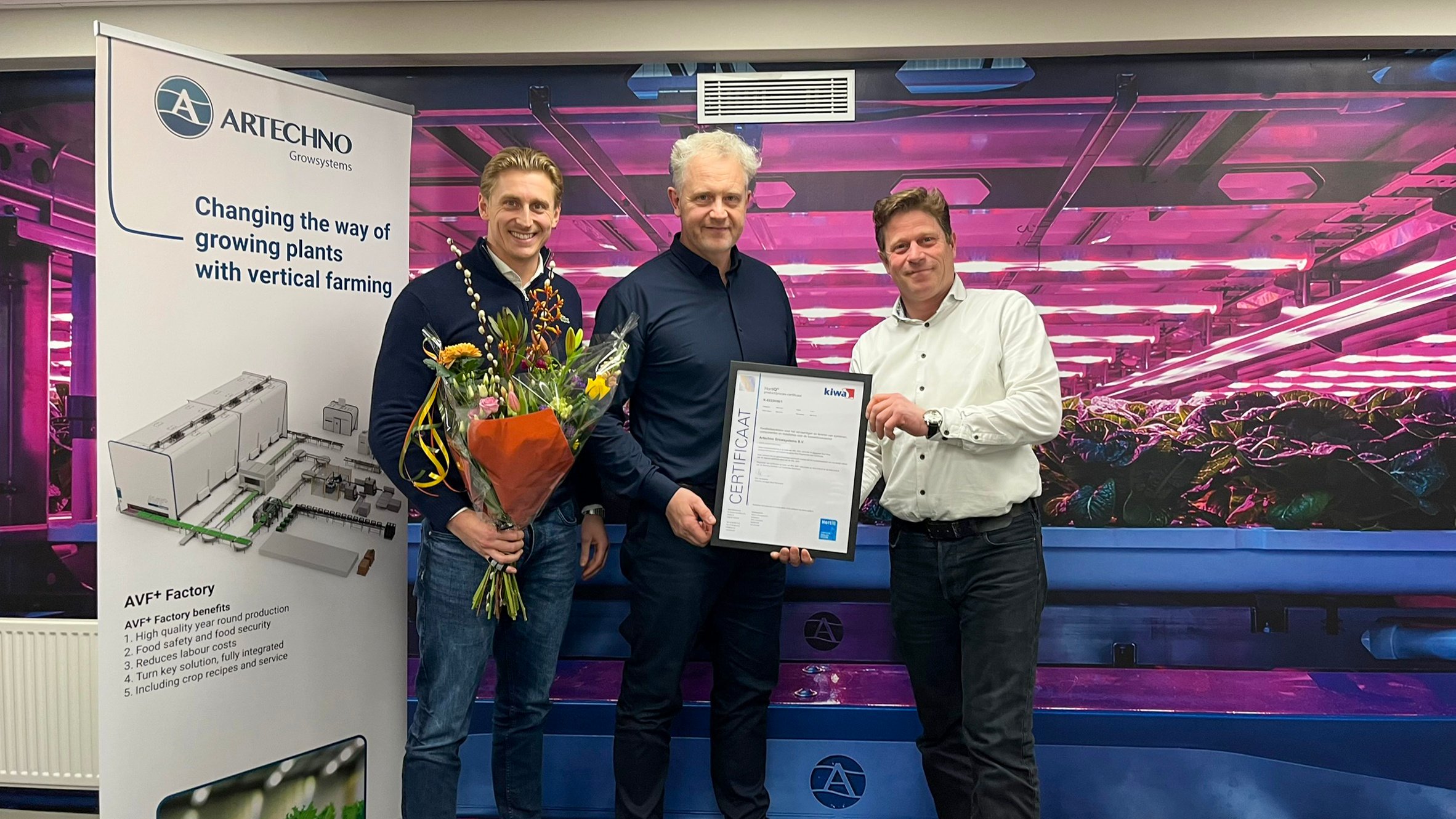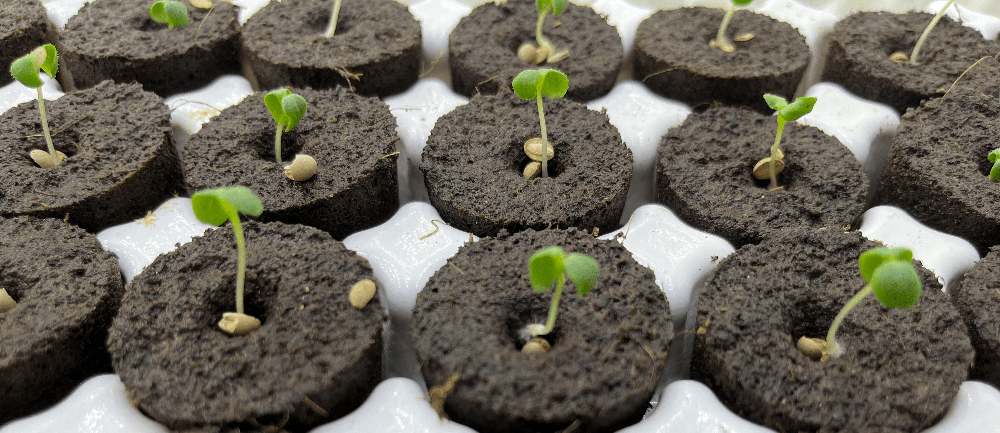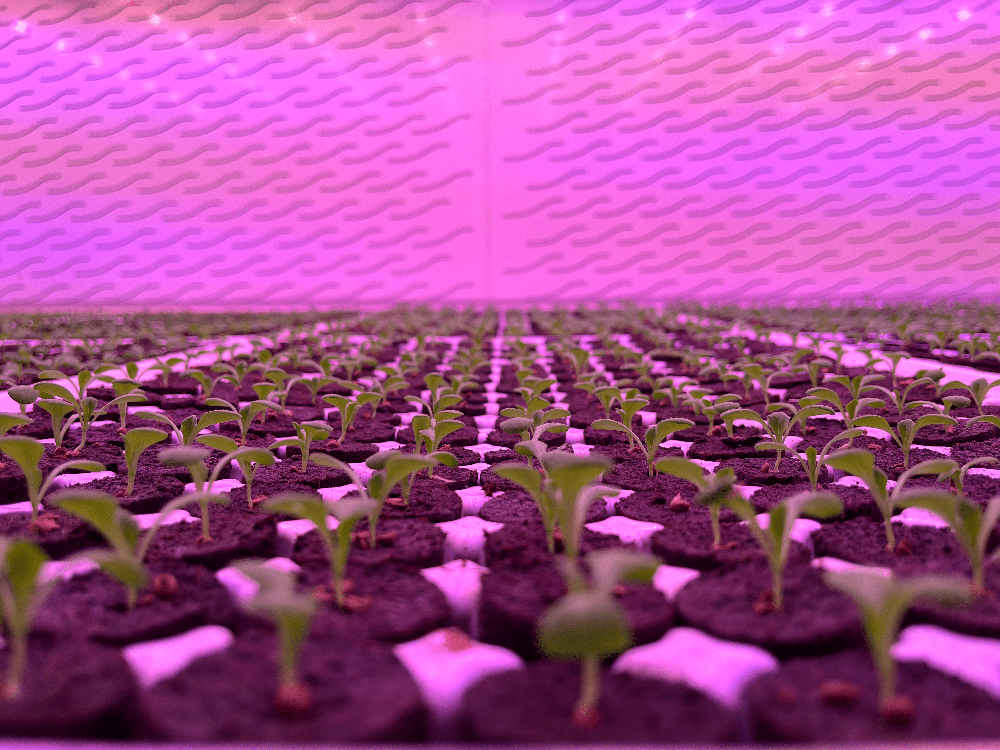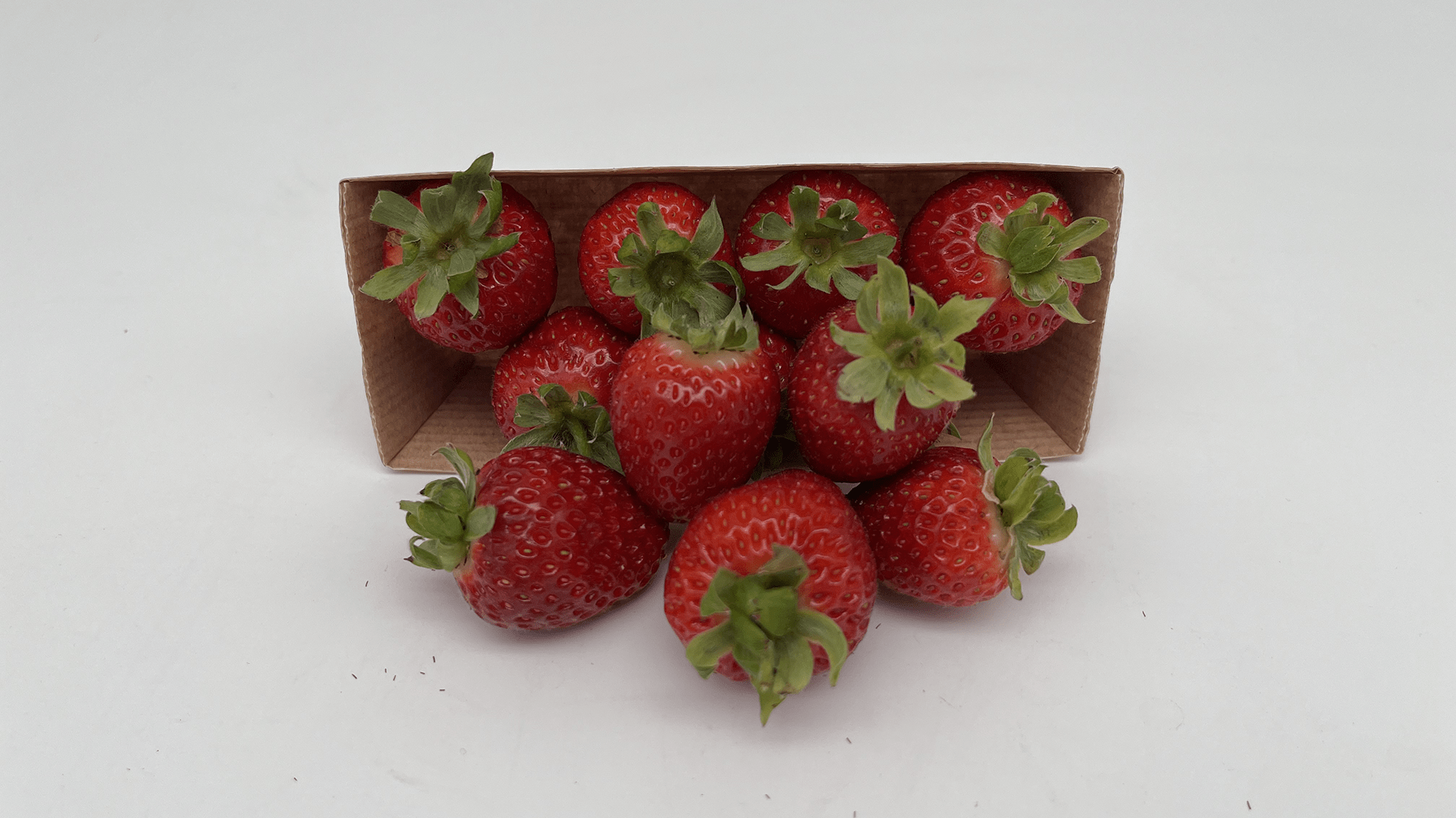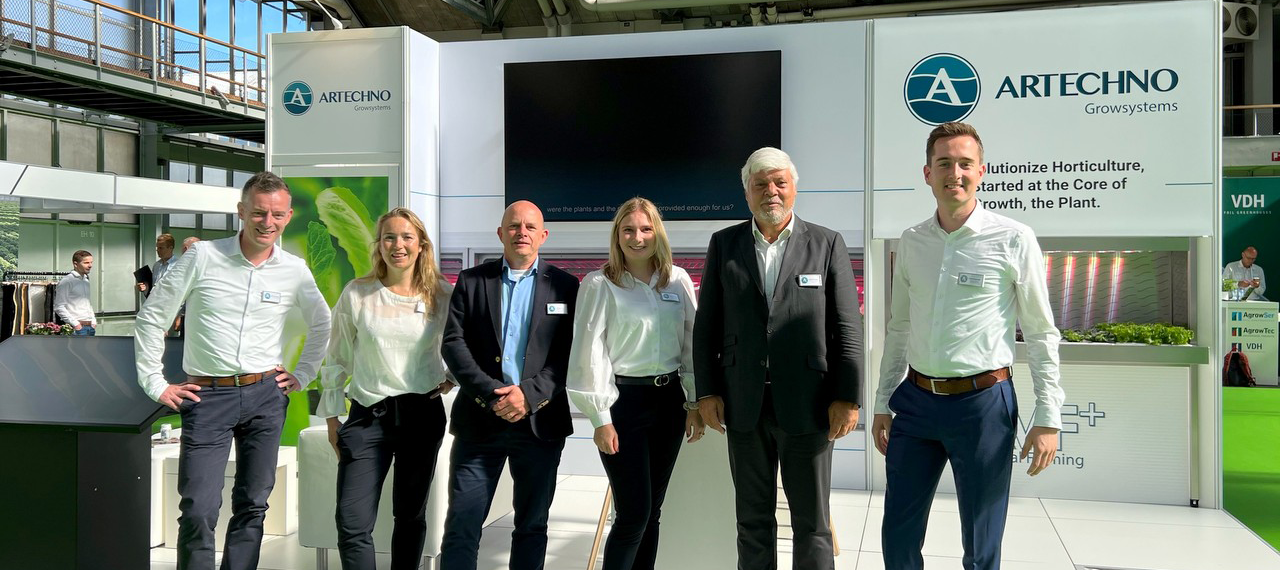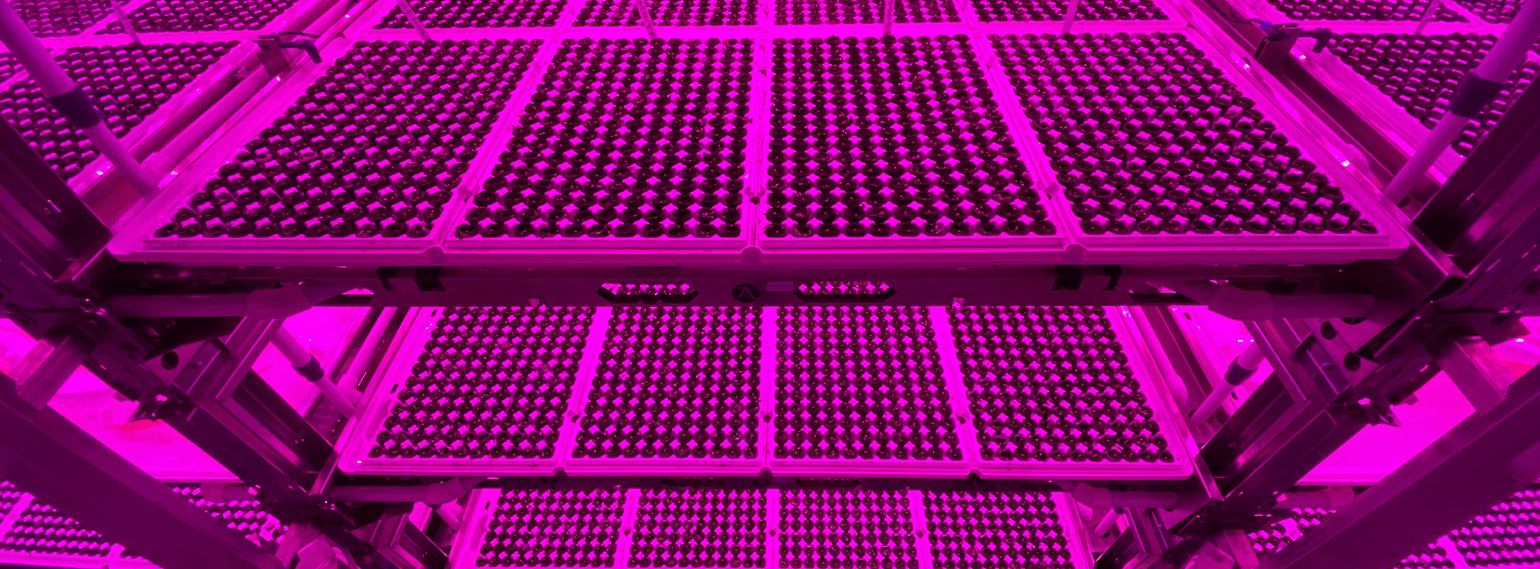Everything you need to know about vertical farming
Vertical farming is the ideal solution for growing crops sustainably and efficiently at any desired location.
The popularity and the demand for vertical farming are growing rapidly worldwide. But what exactly is vertical farming? And what are the pros and cons? This blog provides detailed answers to these and many more questions.
What is vertical farming?
In vertical farming, crops are grown vertically rather than horizontally, as opposed to traditional farming in agriculture and greenhouses. The products are grown in several vertically stacked layers, one above the other, allowing for optimal space use. In this innovative and modern method of indoor vertical farming, environmental factors such as temperature, light, humidity, and nutrients are controlled and manipulated. Thus, creating the optimal environment for plants to grow fast, strong and healthy.
Combining the optimal environment for the plant and the clever use of space optimizes production. On a small area, 10 to 15 times more crop output can be achieved than on a field.
Summary: Vertical farming involves growing crops vertically indoors in a controlled and optimized environment.

A brief history of vertical farming
Although indoor farming has been making rapid inroads in recent years, its history goes a long way back.Some 2,500 years ago, hanging gardens adorned the city of Babylon, one of the seven wonders of the world mentioned by the ancient Greeks [4]. The hanging gardens are considered the prototype of vertical farming. Many centuries later, in 1915, the term "vertical agriculture" was first used by geologist Gilbert Ellis Bailey. His view on this was very different from our contemporary view. Bailey planned to use explosives to plant crops deeper in the ground [5].In the 1960s, Austrian engineer Othmar Ruthner built several greenhouse towers using hydroponics (you can read more about hydroponics below) [6].Yet the concept of vertical farming did not catch on for a long time due to the high energy and maintenance costs involved with the growing method.
In the early 2000s, vertical farming finally gained a foothold. At that time, plant production systems with multiple layers on top of each other, using artificial lighting, were developed, both in America and Japan [7].After this, the awareness and popularity of vertical farming systems grew rapidly worldwide, and vertical farming companies shot up like mushrooms.
Summary: The history of vertical farming can be traced back to 600 B.C., but from the early 2000s, the concept broke through.
Which crops are suitable for vertical farming
Not all crops can be grown with vertical farming. What characteristics do the most suitable crops have to be grown by vertical farming:
- The plants are relatively small in size, at around 40 cm or smaller
- The crops can be grown hydroponically (on water, without soil)
- The crop is a high-value crop (e.g., because it is difficult to find in the region, there is a high selling price per kg, or there is a high demand for the crop )
- The crops have a fast growth cycle and produce many kg per m2
- The price per kg of the crop is high; the higher, the better
- The popularity of the crop is high in the market where it is sold
- The product is difficult to grow locally
- The supply in the market is small
Consider leafy greens (such as spinach, leaf lettuce, and arugula), fresh herbs (such as cilantro, basil, and chives), and microgreens (such as cress, mustard red frills, and radishes).
Other potential crops for vertical agriculture include:
- Strawberries
- Saffron
- Cannabis (propagation)
- Flowers (propagation)
- Edible Flowers
- Grasses
- Green plant propagation (tomatoes, cucumber, bell pepper, and more)
Summary: In principle, any crop can be grown in a vertical farm. However, some crops are better suited than others.

Advantages and disadvantages of vertical farming
The popularity of vertical farming does not come out of the blue, as vertical farming has numerous advantages over traditional farming. Although there are many advantages, there are also some potential disadvantages to vertical farming.
We list 10 significant advantages and 4 possible disadvantages of vertical growing systems.
Popularity vertical farming
Interest in vertical farming is growing worldwide, for good reasons:
- The technologies behind vertical farming, such as climate control, light efficiency (LED), and automation, have improved significantly in recent years.
- Consumer and retailer interest in local and pesticide-free produce continues to grow.
- Changing conditions, such as the corona pandemic, the war in Ukraine and climate change, mean that regions are keen to be as independent as possible for their food supply.
- Vertical farming offers a much greater and year-round production capacity than traditional farming,
- With its consistent yearly output, growers are able to grow on contracts delivering the exact same volume every day year-round.
- Vertical farming offers certainty about the quality of the product.
- It is a sustainable cultivation method because, among other things, no pesticides are used, and up to 99% less water is needed than in traditional agriculture.
- The plants grow much faster than in traditional agriculture.
The popularity of vertical farming is growing tremendously, albeit not in all countries. Vertical farms are especially popular in countries with a high dependence on export for their fresh produce and, by the same token, have few facilities to produce these crops themselves. This can be caused, for example, by the fact that the climate is not suitable, labor costs are too high, or other costs do not allow the crops to be produced profitably.
Summary: The popularity of vertical farming is high, and ever changing conditions and new developments continue to boost it.
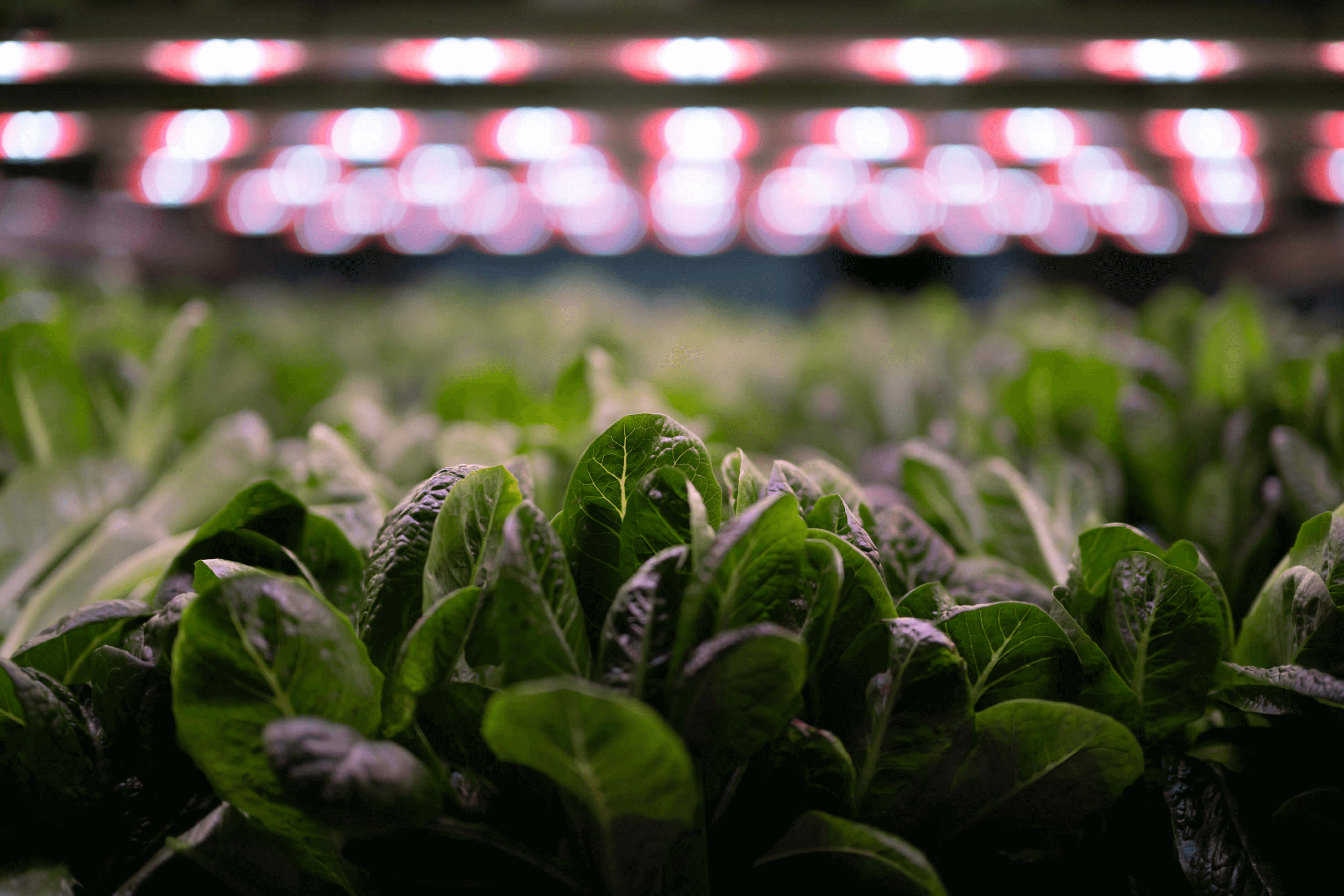
The future of vertical farming
The benefits of vertical farming and its continued popularity are causing the vertical farm market to experience massive growth. Fortune Business Insights predicts that the total vertical farming market will grow at an average annual rate of 24.8% through 2026 [11]. This will bring the market value of vertical farming to $12.04 billion by 2026, an increase of 465.3%. Judging from Fortune Business Insights' market analysis, each region has a market share of:
- The Middle East & Africa 6.1%
- Latin America 4.5%
- Asia-Pacific 33.3%
- Europe 24.8%
- North America 31.3%
The future of vertical farming can be called rosy, to say the least.
Summary: The market value of vertical farming will continue to grow in the coming years, reaching a market value of more than $12 billion by 2026.
Three types of vertical farming
Vertical farms come in all shapes and sizes, ranging from simple two-level systems to elaborate automated systems with many layers.
All vertical farming systems use one of the following principles of vertical farming: hydroponics, aeroponics, or aquaponics.
1. Hydroponics
The most widely used vertical growth principle is hydroponics. This involves growing crops without the use of soil. The roots of the plants are suspended in a solution that is rich in nutrients. The composition of the nutrient solution is continuously controlled, so the plant grows in the most optimal composition of nutrients.
Features of hydroponics:
- Precise addition of nutrients
- Low water consumption
- Low or no disease impact (viruses, bacteria, but also insects)
- Sparse consumption of materials, for example, substrates
2. Aeroponics
'Aeroponics' is a term coined by NASA. It means "growing plants in the air without soil and very little water. It is a variant of hydroponics, in which plants grow in air or mist that is sprayed on their roots several times an hour.
Features of aeroponics:
- The roots of the plantlets are better aerated, allowing them to grow faster.
- The roots and substrates contain no moisture and depend on irrigation every half hour or hour. This makes the plantlets particularly dependent and more vulnerable. In the event of a failure, the plantlets can die within an hour.
- Aeroponics requires precision sensor technology and a strict dosing regime to optimize results.
3. Aquaponics
Aquaponics combines aquaculture and hydroponics. Where aquaculture is the cultivation of organisms in water and hydroponics is the cultivation of plants without soil. These techniques are combined by growing fish and feeding the plants with the water the fish swim in. The waste of the fish is converted into food for the plants.
Features of aquaponics:
- The start-up phase of an aquaponics system is a lot longer, as the microbial population must grow and stabilize. The balance is often difficult to completely achieve.
- Aquaponics requires a broad knowledge base, both in aquaculture and hydroponics as well as in microbes and nutrient levels.
- It is a water-efficient production method.
- Growing in an aquaponics system diversifies the revenue model for vertical farms and can also open the door to a sustainable closed loop growing system.
Summary: There are three types of vertical farm systems, all with their advantages and disadvantages. It depends on the plant and the wishes of the grower which system is most suitable.
Artechno's revolutionary AVF+
At Artechno, we focus on providing a vertical farming system that is the best for the young plant. We have developed the innovative AVF+ systems using hydroponics with our plant-focused approach. AVF+ stands for Automated Vertical Farm plus.
The AVF+ Systems:
- Are supplied with everything you need for vertical farming and large-scale crop production
- Require a fraction of the cost involved in normal farming and indoor farming since fewer workers are needed to run the farms
- Are scalable to the needs of the farmer
- Utilize a climate cell that creates the ideal climate for the crop, making it strong, healthy, and growing quickly
- Use 99% less water
- Have a ROI of <5 years with the most favorable business cases having an ROI <3 years.
The climate cells from the AVF+ systems takes vertical farming to the next level. In this climate cell, light, climate, water, and nutrients provide the optimal growing conditions for the plant.
Crops that are less suitable for vertical farming
In principle, almost all crops can be grown in a vertical farm. However, there are certain types of crops with characteristics that are less suitable for a vertical farm.
In the vertical farm, we use hydroponics, which we explained above. Hydroponics is less effective as a growing method for crops in which the fruit grows in the ground, such as potatoes, onions, and carrots, As the "fruits" have more difficulty handling the wet conditions.
Secondly, crops that grow taller than 50 centimeters (bush crops, grains, or even corn) are less suitable as they take up a lot of volume.
Finally, crops with large fruits, such as eggplants, cucumber, pumpkins, and watermelons often take up too much space to profitably grow in a vertical farm.
Summary: Crops in which the entire fruit grows in the ground and crops that grow very tall or take up too much space are less suitable for growing in a vertical farm.
Vertical farming; a world full of opportunities
Vertical farming is the future, not for all crops, but those suitable for vertical farming.
Vertical farms make cities more resilient by providing year-round certainty about the quantity and quality of crops, as they are not affected by weather and climate changes.
Vertical farming faces a bright future and contributes to a sustainable environment with the continuous development of innovative solutions, such as Artechno's AVF+.
Are you interested in vertical farming? Or do you have any questions? Don't hesitate to contact us; we are happy to help you.
Resources
[1] The University of Sheffield. (2015). A Sustainable Model for Intensive Agriculture. Grantham Centre (source).
[2] Cho, R. (2011). Vertical Farms: From Vision to Reality. Columbia Climate School (source).
[3] Cho, R. (2011). How Sustainable is Vertical Farming? Students Try to Answer the Question. Columbia Climate School (source).
[4] Al-Kodmany, K. The Vertical Farm: A Review of Developments and Implications for the Vertical City. Buildings 2018, 8, 24 (source).
[5] Bailey, G.E. (1915). Vertical Farming. Wilmington, Del. : E. I. Dupont de Nemours Powder Co..: Wilmington, DE, USA.
[6] Kleszcz, J., et al. (2020. Vegetable and Gardening Tower of Othmar Ruthner in the Voivodeship Park of Culture and Recreation in Chorzów—The First Example of Vertical Farming in Poland. Sustainability, 12(13), 5378 (source).
[7] Kozai, T., et al. (2006). Commercialized closed systems with artificial lighting for plant production. Acta Hortic, 711, 61–70 (source).
[8] Çi̇çekli̇, M., et al. (2014). Transformation of today's greenhouses into high technology Vertical Farming Systems for metropolitan regions. Journal of Environmental Protection and Ecology (source).
[9] Banerjee, C. et al. (2013). Up, Up and Away! The Economics of Vertical Farming. Journal of Agricultural Studies (source).
[10] Despommier, D. (2013). Farming up the city: the rise of urban vertical farms. Trends in Biotechnology, 31(7), 388–389 (source).
[11] Fortune Business Insights. The global vertical farming market is projected to grow from USD 3.64 billion in 2021 to USD 17.59 billion in 2028 at a CAGR of 25.2% in the forecast period (source).
[12] Despoina, D., et al. (2020). Advances in Food Security and Sustainability. 5, 1-51 (source).

